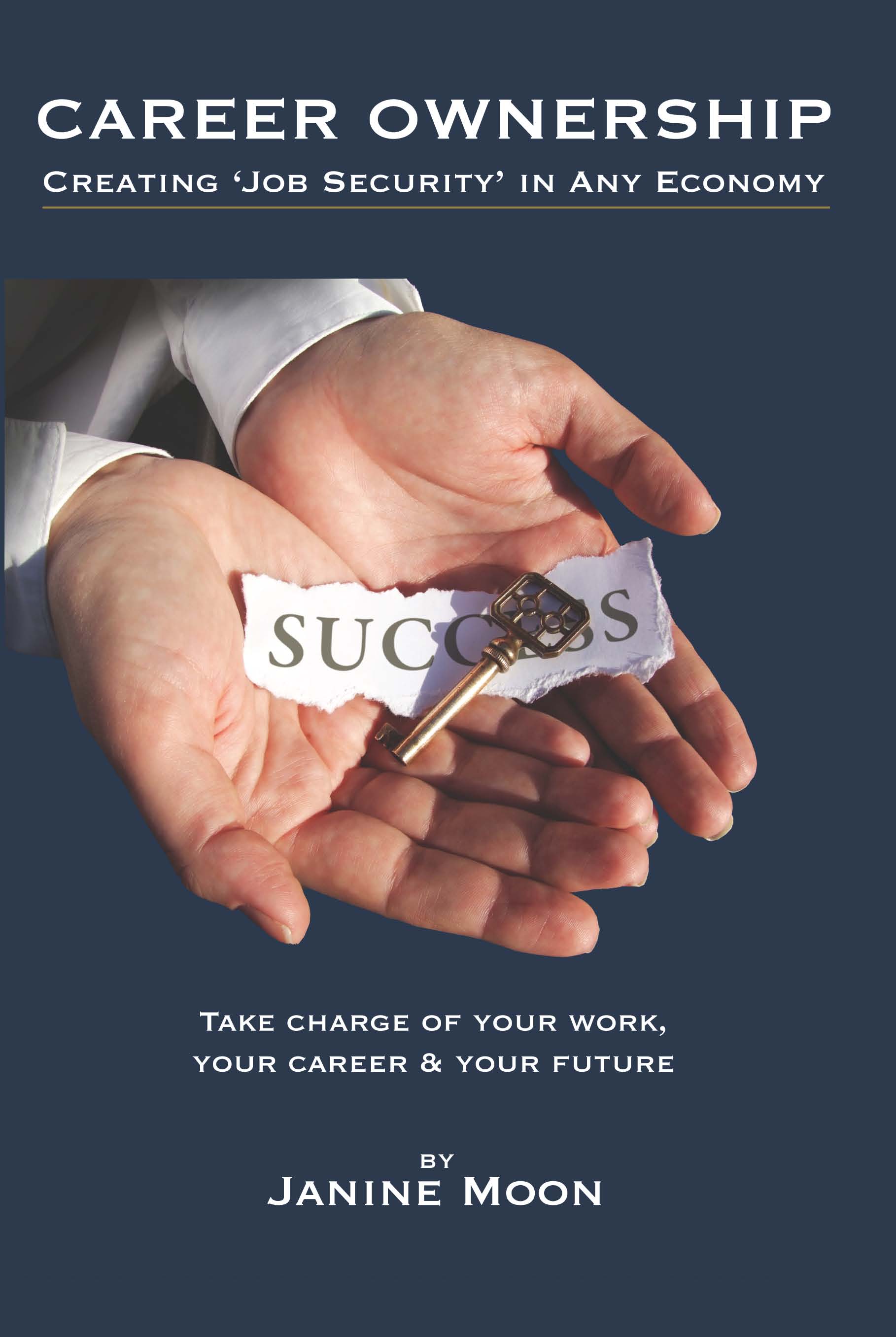[tweetmeme source=”JanineMoon” only_single=false]Help me understand please!
I read an article in a recent International Business Times, U.S. edition, reporting that 3.2 million jobs are going begging because perfect candidates aren’t available within the 15 million unemployed. And, apparently, they aren’t available internally, either.
[Note: I am generalizing and lumping all employers together…I acknowledge that there are exceptions!]
As the author of a book that places career development responsibility squarely in the employee’s lap (Career Ownership: Creating ‘Job Security’ in Any Economy), I still find it stupefying that employers don’t consider growing that perfect candidate–whether from the inside or outside. American employers as a whole look at investment in their greatest assets as an expense to be trimmed or eliminated. 
Organizations think nothing of property, building and equipment improvements to extend the value of those physical assets, yet they find it a waste of dollars to maintain or improve the value of the assets that count most in today’s economy: workers’ brains. And, this says nothing of the value of workers who bring their hearts as well, motivated to go over and above to ensure the success of the business.
How did organizations get to the place where an operating assumption is that assets must be “perfect” in order to be a “fit,” to be of value? Or that maintaining the value of capital assets is a dispensable expense? Yet, these assumptions seem to drive many organizations in today’s economy. It’s the same thinking that organizations use to terminate workers who finish a project and hire different workers for the next–even if training or another learning solution would bridge the gap quite nicely.
Why is it that:
>Employers require experience, yet ignore slope of a learning curve?
>They downsize a workforce to reach quarterly financial goals while shelling out big bucks for outplacement to assuage guilt and appear socially sensitive in “hard times”?
>So many employers consider improving and “re-purposing” human assets to be an unwarranted expense while ignoring the expense associated with turnover, lost productivity, low morale and disappearing customer loyalty?
If a position can go unfilled for months while a search for the perfect candidate occurs, how important can it be to fill it in the first place? Do the accolades managers receive for coming in “under budget” outweigh the costs (much more difficult to track) of filling a position with less-than-perfect? What numbers would organizations discover if they weighed the ROI between bringing an internal candidate up to speed and recruiting for the perfect fit? How is the lost productivity measured and tracked? The lower efficiency and missed opportunities? Customers who go with a more responsive competitor while the search drags on for a qualified candidate?
How about measuring the real costs of doing business?
Organizations purport that they must “make the numbers;” so it is time for organizations to take responsibility for tracking all the numbers—not just the ones that make a quick short-term impact. In any economy, sacrificing smart, solid longer term business practice in the interests of meeting outdated stability measures results in a false sense of security for the bankers and the stockholders, especially when it’s the assets that are sacrificed.
 In the May issue of Fast Company, authors Dan Heath and Chip Heath make a compelling case for growing talent internally rather than recruiting from the outside. It’s high time business people review outdated activities that fall under the guise of “sound business practice” and upgrade those principles to align with the needs of the 2010 economy.
In the May issue of Fast Company, authors Dan Heath and Chip Heath make a compelling case for growing talent internally rather than recruiting from the outside. It’s high time business people review outdated activities that fall under the guise of “sound business practice” and upgrade those principles to align with the needs of the 2010 economy.
Why not weigh in?
What will it take for employers to put workers on the “asset” side of the ledger instead of the “expense” side? How can workers help this happen?
Filed under: careers, Change at Work, Employment market, Hiring, Workforce development | Tagged: bad corporate decisions, Change at Work, corporate America, employment market, growth & development, retraining, short-sighted leadership, Workforce development |





[…] This post was mentioned on Twitter by Janine Moon and thoughtLEADERS, LLC, MaureenMetcalf. MaureenMetcalf said: RT @Janinemoon Who’s missing the mark? http://bit.ly/bblMsY […]
What will it take to truly value employees?
A first step is developing/hiring managers who care about human “talent” – not just human “resources.”
When the people ontop realize that a skilled, happy, loyal team of involved workers will lead to the success of their enterprise, then they will learn to build such a team — training them and appreciating them.
Thanks for weighing in, Shari…there’s so much information available, yet ignored!
12: The Elements of Great Managing by Rodd Wagner & James Harter provides great detail about the impact of connected and motivated employees: they raise the top line, the bottom line, profits, customer loyalty and share value. They reduce turnover, absenteeism, and customer complaints…among other measures. My blog post for Labor Day–last year–highlights some of the facts around the business significance of employees who are emotionally connected to their work: http://bit.ly/se508.